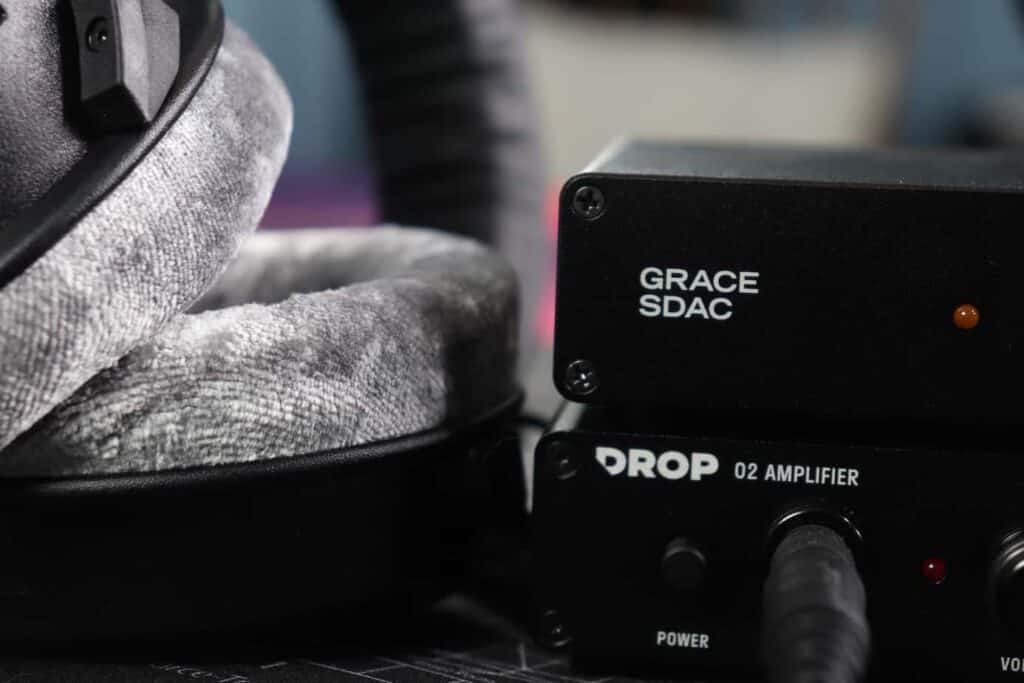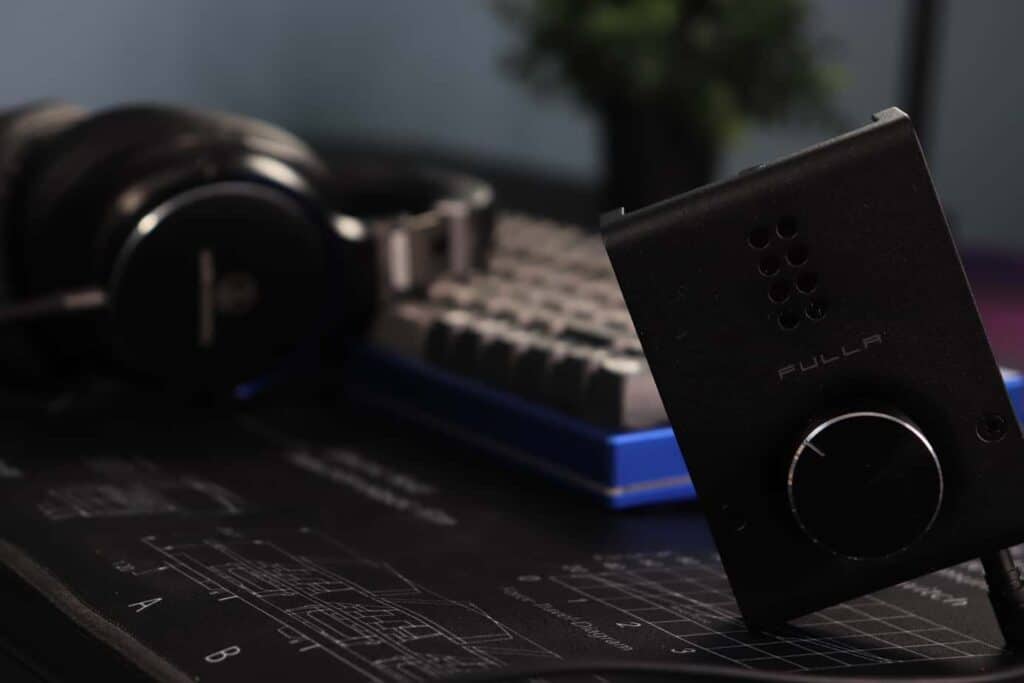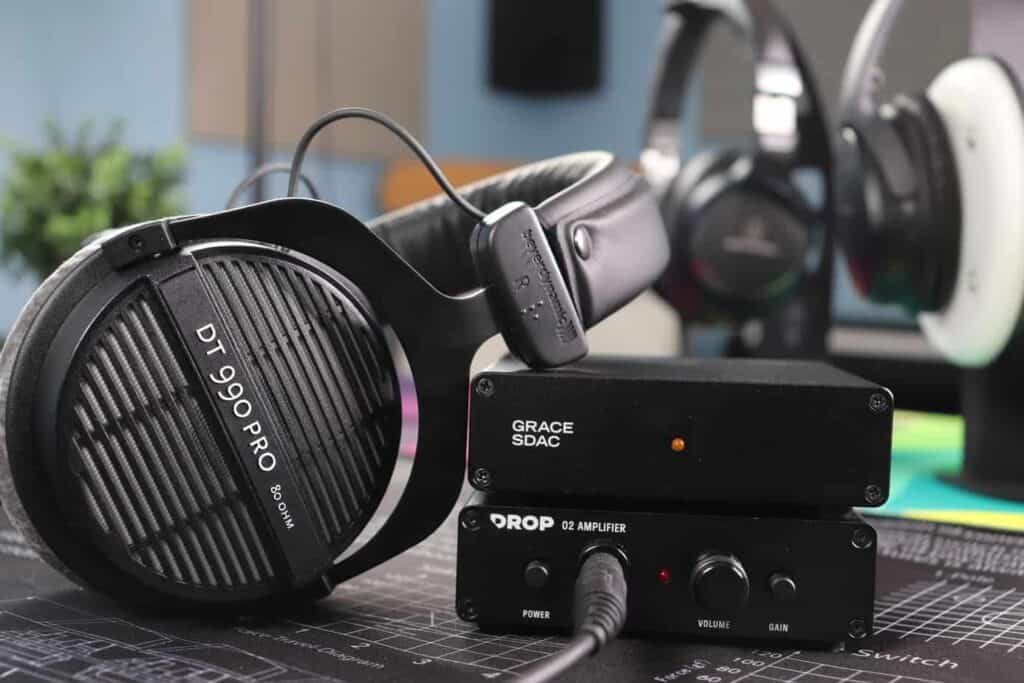If you are looking to improve your audio quality with an amp, I’m sure you tried to decide between portable and desktop amps.
Let’s find out which type is better depending on your situation.
Portable vs Desktop Amps: The Key Differences

Sound Performance
Typically desktop amps deliver the best performance but when comparing two different types of amps, with a variety of price ranges, there is a lot to go over.
If comparing a portable amp versus a desktop amp for the same price, the desktop amp will probably have better performance. Also, due to the smaller size of portable amps, they are unable to deliver as much power as some desktop amps.
The most premium amps that deliver the most, clean power will be desktop amps.
Portability
Portable amps, as the name suggests, are designed to be better for portable situations. They still can be used with desktops but to get a better audio experience when on the go, portable amps are the solution.
Desktop amps are unusable in a portable setting because they don’t have batteries.
Pricing
For the same performance, portable amps are usually more expensive than desktop amps but they also cost more because they must be more compact and may even support Bluetooth.
The price range is bigger for desktop amps as you can get budget amps as low as $25 and premium options above $1000 but portable amps have few, if any, options over the $300 range.
Features
Both desktop and portable amps deliver plenty of features. Some of the more premium portable amps have features such as Bluetooth.
If you are looking for a specific feature it is more likely to be on the desktop platform. Different desktop amps have features such as software support, virtual surround sound, they supply far more inputs and outputs, and much more.
Do You Need an Amp?

Before deciding if you should get a portable or desktop amp you need to know if you will benefit from even having an amp.
Two things that you need to know about are the impedance and sensitivity of your audio device.
The impedance tells you how much power your headphones or IEMs need and sensitivity is related to how efficient your audio device is.
Devices with an impedance below 32-35 ohms and a high sensitivity above 90 decibels, will not need an amp.
Headphones that are 80ohms or higher in impedance with sensitivity lower than 90 dB. Usually need an amp whether it’s portable or a desktop amplifier.
Another way to tell if you may need an amp is if you find that you are using most of the volume scale, an amp could be beneficial for you.
This is because at that upward part of the scale, that is when the sound starts to become distorted. A dedicated amp would keep the clarity of the quality while also giving more power so you can listen to something even louder than before.
If you want to know more, consider reading about if an amp is worth it, and if so why.
What Type Is Best for You?
In the majority of situations, a desktop amp will be the best option for you and those with a portable amp probably have a setup at home.
For those who travel a lot and want to use more powerful headphones or want to get more out of their current headphones, a portable amp is a great option.
For those who have a desktop amp but still listen to music while traveling often, they could benefit from a portable amp.
If you want to use more premium headphones on the go and at home, but can’t afford to get an amp for both situations, getting a portable amp is a good way to go.
Many portable amps are good in both situations, even though desktop amps will deliver better performance.
If you spend most of your time at a desktop, a desktop amp is a better use of your money getting a portable amp.
In the situations where you are traveling, if you can only afford a desktop amp, the audio on your phone or any other device you may use on the go will be sufficient.
Overall a desktop amp is the best option for those with an audio setup.
In some cases, a portable amp may be worth it.
What Is a Desktop Amp?
A desktop headphone amp is the most popular kind of headphone amp.
Like all amps, they take a low power signal from a DAC that is either built into the device or an external device and then amplify that signal so it is strong enough for a device such as headphones or earbuds to turn in sound waves.
Desktop amps, as the name suggests, sit on your desk. They will take up space but it is well worth it for the sound quality improvement.
What Is a Portable Amp?
Like desktop amps, portable amps serve the same purpose to amplify the signal from a DAC. The key difference is that instead of being on a desk these amps are designed specifically so they can be portable and fit in a pocket.
They take up very little space and often because they are portable have a heavy focus on a slim shape and strong build.
Recommended Amps

Best Portable Amp
If you think a portable amp setup is right for you FiiO delivers a great sound experience in this setting with the Q5s.
In addition to the audio improvement, this provides multiple key features.
This Q5s delivers excellent audio and with the right headphones, you will notice much better audio compared to a laptop and especially a phone.
Built into the amp is a DAC that supports Hi-Res decoding and can help you notice a decent difference between your old and new audio solution.
One of the biggest features is Bluetooth 5.0 between your phone and amp. The battery has a life of 9 to 25 hours. This a great feature because on the go for fewer cables.
The Q5s can be used as both a desktop and a portable amp. It has plenty of outputs considering it is a portable amp and has many adapters and accessories.
The Q5s is also modular meaning there are a number of amp modules that you swap in and out, sold by FiiO.
The biggest drawback to this amp is the price. Due to features such as Bluetooth and the small form factor this amp costs about $350.
Overall, this is a fantastic product.
Best Budget Portable Amp
If you still want to enjoy premium headphones that need a lot of power on the go, FiiO delivers another great option with the FiiO A1.
The A1 has many reduced features compared to the Q5s to have a greatly reduced price. For example, the A1 does not support Bluetooth and only has support for one input and output.
To power your headphones there are up to 13 hours of battery life for the A1.
The audio is definitely a step up compared to onboard audio from something like your phone and will deliver more power so you can use more premium headphones with your device.
A big feature that you might find useful is a built-in EQ. With a button on the device, you can add more bass to the device.
The A1 is a great option for the price and a good value pick.
Best Desktop Amp Under $200
At a similar price point to the Q5s, Schiit has the Magnius for just under $200.
The Magnius provides plenty of power for most headphones. It delivers performance that beats most of the competition at this price and even competes with amps at higher price points.
There are a decent amount of outputs for those who want speakers with this amp as well.
The sound stage that it delivers is perfect with no distortion and great precision. The Magnius allows a lot of separation with a balanced, clean sound.
Best Value Desktop Amp
If you are starting an audio setup or need more power for your headphones then Schiit’s Magni 3+ and Heresy are great value picks.
There are a few slight differences between the two with the Magni 3+ having a bit more impactful bass. They process sound in different methods but the power delivery is identical.
The inputs, outputs, metal build, and design are the same. The main noticeable difference is the silver casing of the Magni and the black with red accents on the case of the Heresy.
Even though these are $100 they are worth saving for over budget options. Schiit’s offerings are the best for the price until around twice the price.
Conclusion
There isn’t one definitive better option as they are both good for different situations but the desktop side does have the best amps in terms of sound performance if you don’t need a portable setup.
If you have a portable setup a DAC won’t be needed but should be something that you consider if you are making a desktop setup.
There are plenty of options with both options but on the desktop side, there are definitely the most options and the most variety.
Hope this clarifies your questions so you can make the best decision for your use case. Happy Listening!
